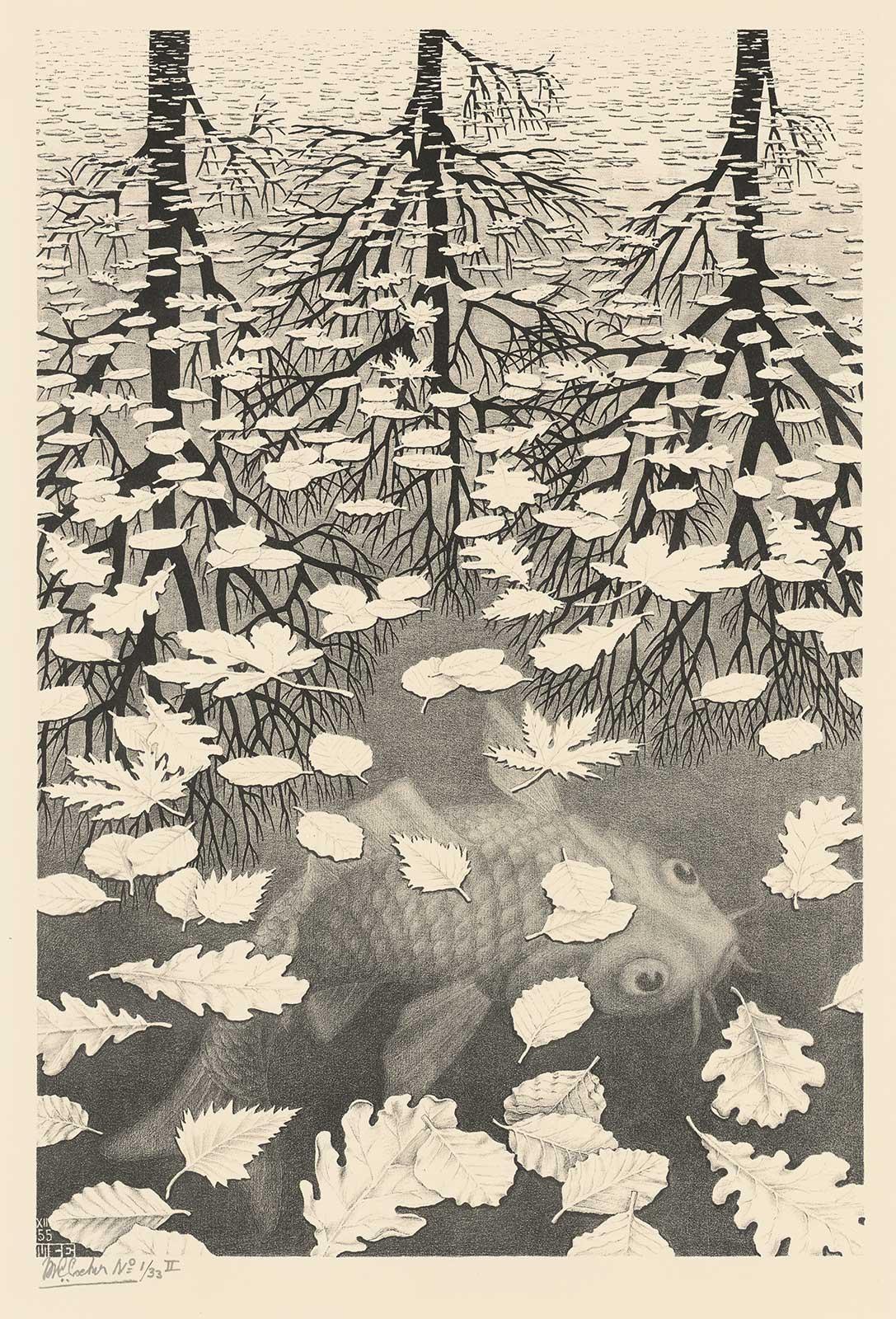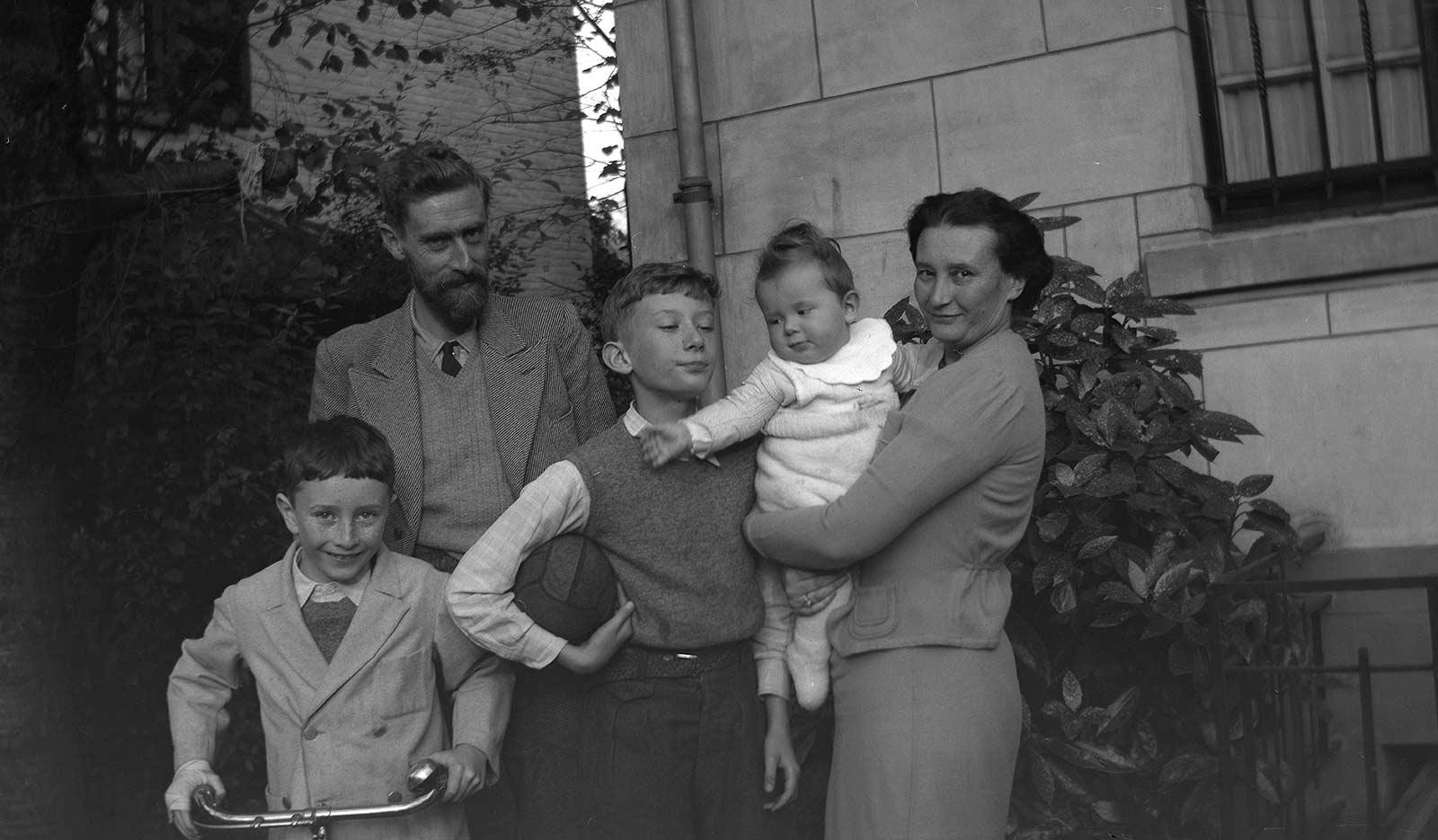

Escher did not fill the page of his diary for the first week of January 1942 with appointments, but rather with a list. He often wrote lists in his diary, from shopping lists and train times to lists of work sold and his own weight and that of his family members. But this was a very special list. It contained the names of the artists who had joined the ‘Kultuurkamer’, which was established on 25 November 1941. In Germany itself, the ‘Reichskulturkammer’ was founded on 22 September 1933 by propaganda minister Joseph Goebbels. Its Dutch counterpart was also established to serve the occupying force and its Nazi ideology. Keywords were nationalism, solidarity with the nation and the people, historical awareness, banishing ‘degenerate, unhealthy, unnatural creativity’ and a ‘positive Germanic attitude’. Any artist wishing to exhibit, publish or make music had to be a member. Jews were excluded. By becoming a member, one was formally assenting to the politics of the occupier.
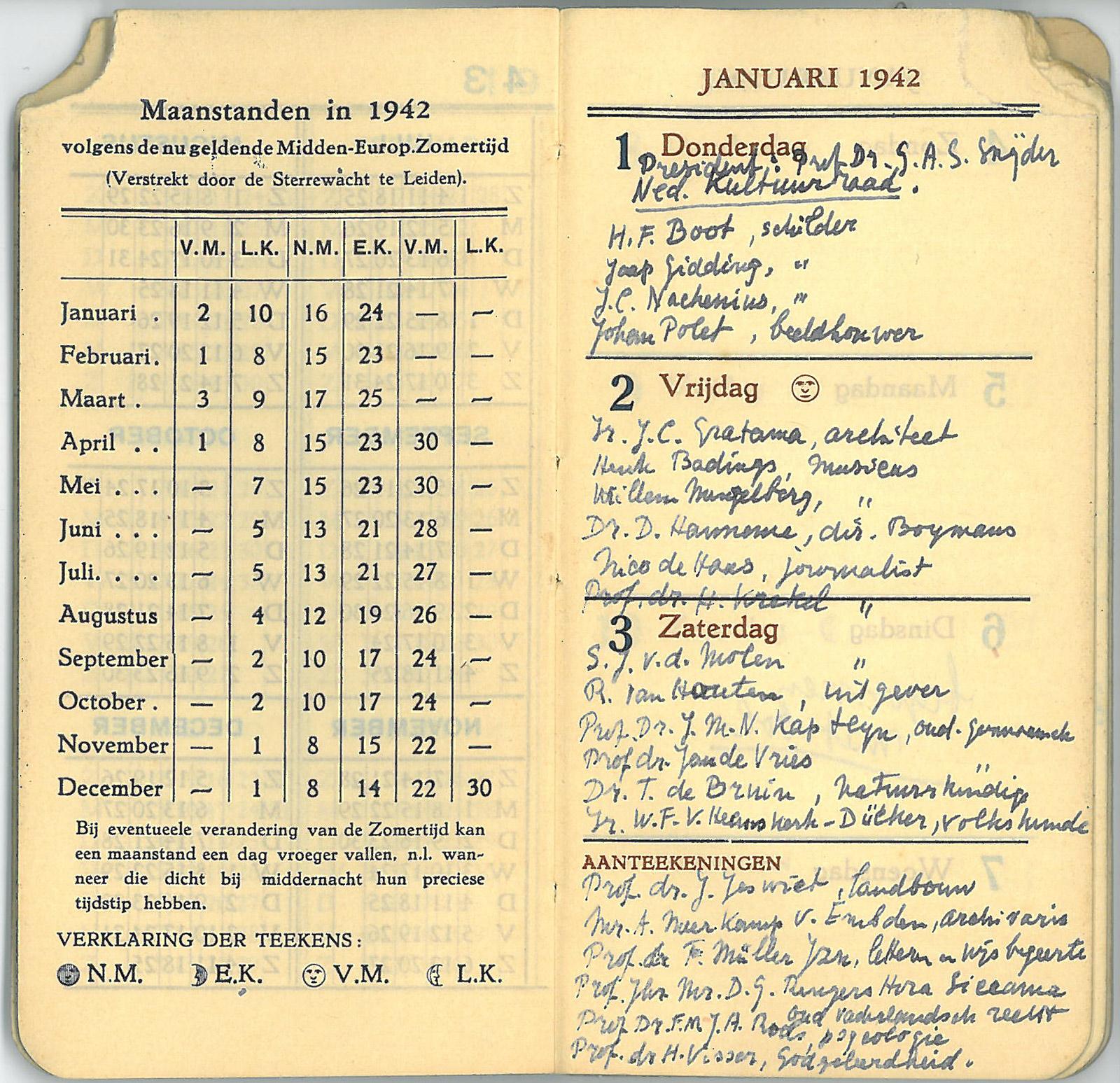
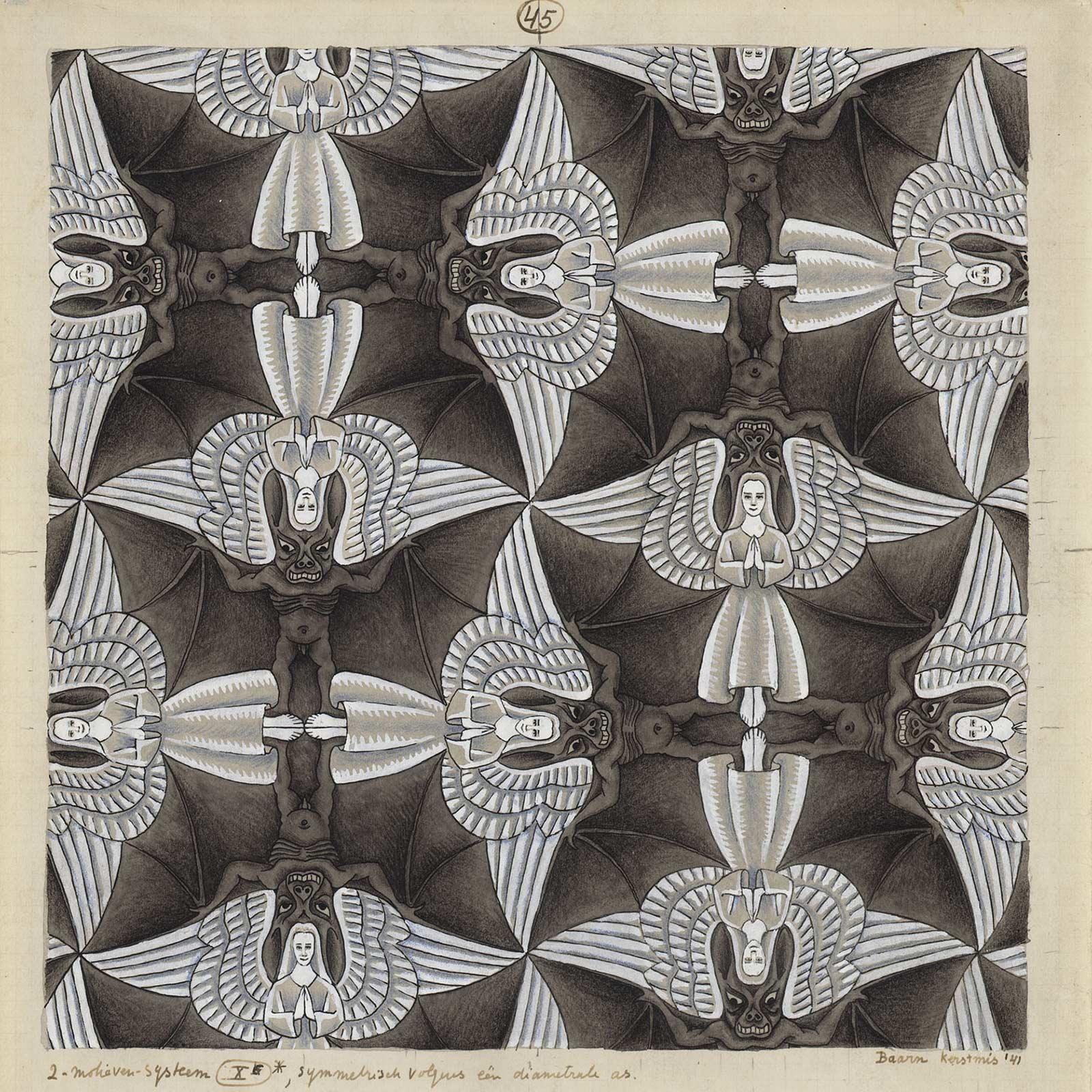
The subject had Escher so preoccupied that he was unable to focus on his work. And when he did, what he created seemed to be a direct reflection of the bizarre situation the world was in. At Christmas 1941 he produced a tessellation featuring angels and devils—a subject he also used for a wooden ball that he cut in early 1942.
On 1 December 1941 Escher wrote a letter about the ‘Kultuurkamer’ to his friend Hein ‘s-Gravesande:
'If I have understood correctly, one of the requirements set for all visual artists is that they will be forced to become a member or else be unable to exhibit or take on public assignments. This will be a dubious affair—unless the visual artists decide to refuse collectively. Since the complete exclusion of the Jews, I have had an unpleasant feeling whenever I exhibit, a sense of profiteering, so to speak. I would much rather refuse . An organisation of resistance must be formed, because we cannot start anything individually. As soon as I notice that there is a relatively significant number of artists that will refuse to become guild members, I will follow suit. Here in Baarn I do not really know anyone and do not know any of my fellow artists intimately enough to consult them about it. I feel (and you should not regard it as cowardice) that it is a bit of a stretch to decide without individual consultation with fellow artists to refuse individually and run the risk of standing alone or almost alone later on.'*
Artists were sent a registration form and an Aryan declaration, which they had to complete and return. Although there had been resistance beforehand, a majority of artists would cut their losses. The choice between unemployment and being able to put food on the table was quickly made. But Escher eventually decided otherwise: he did not register.
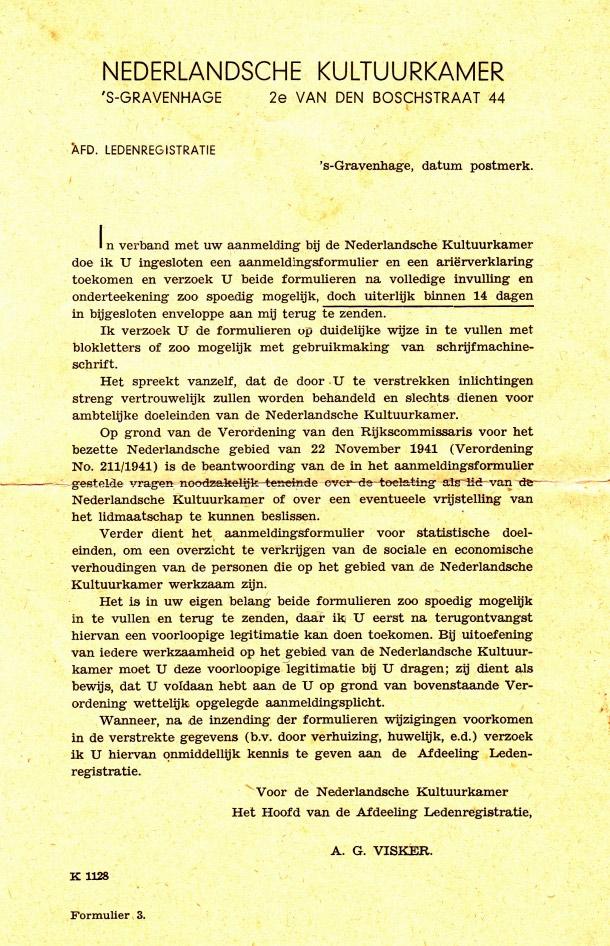
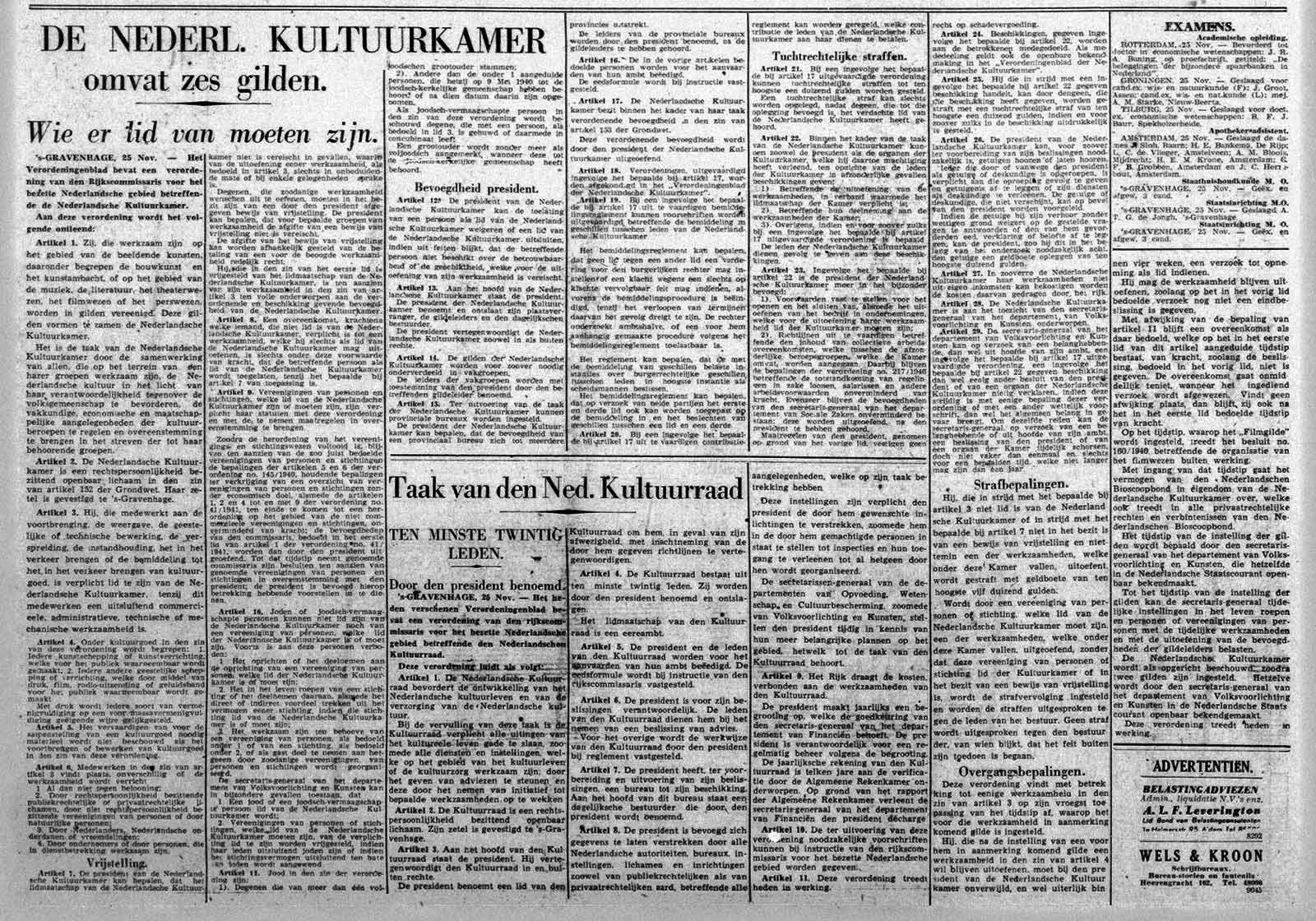
Neither did he want to be involved in any association’s collective membership of the ‘Kultuurkamer’, as he wrote to ’s-Gravesande on 11 January 1942:
'In the meantime I myself resigned as a member of Pulchri as well as of the Grafische Vereeniging. In both resignation letters my stated reason was that I cannot risk the possibility of soon encountering regulations that I cannot agree with. I think that is clear enough, and it is also the true reason. When I heard that the architects, members of the B.N.A. , were to be housed in the guilds against their will and even if they resigned during the membership year, I did not think I should wait a moment longer. What is more, I find it easier to look my Jewish fellow artists in the eye now too.'**
By writing down the names of the ‘Kultuurkamer’ members in his agenda, Escher was formulating a clear message to himself: I have to be on guard against these people.
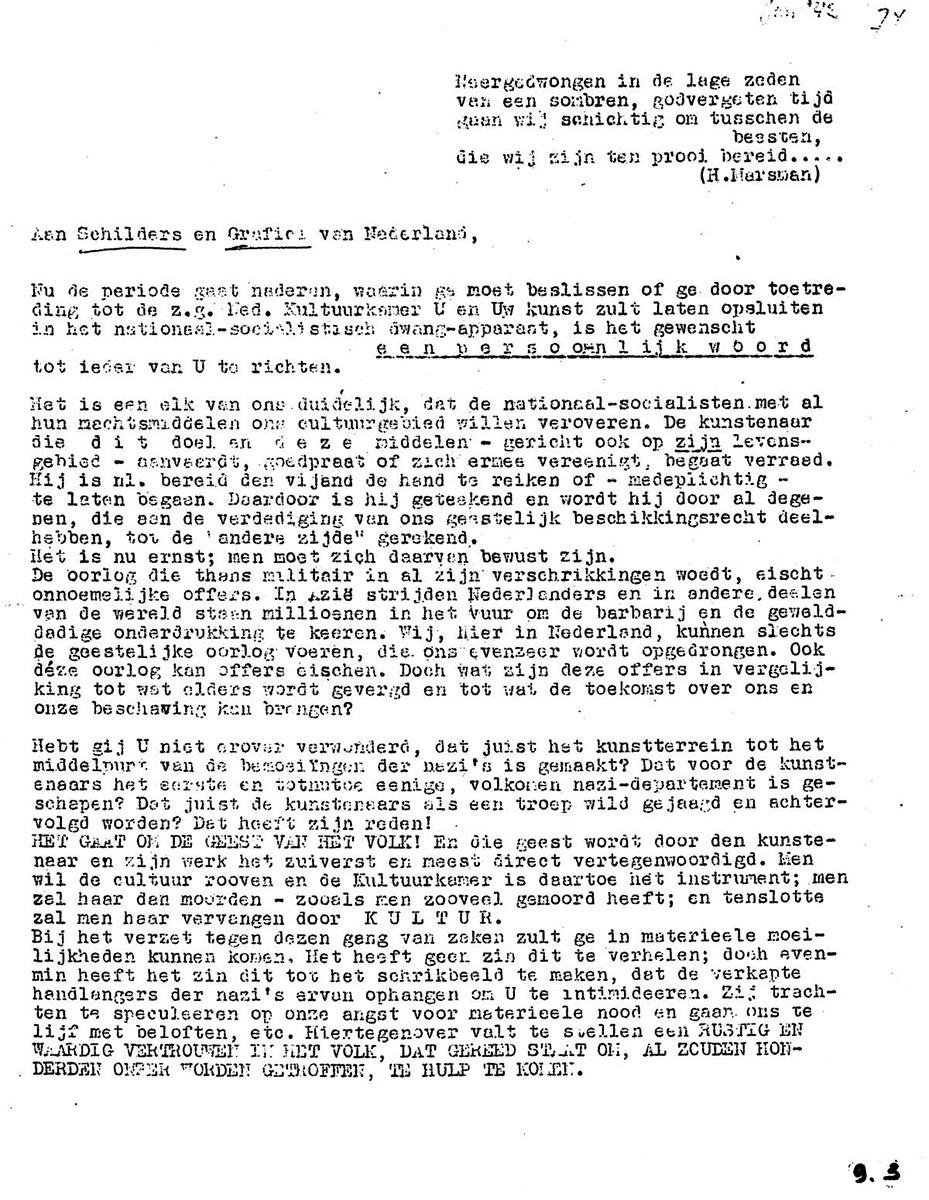
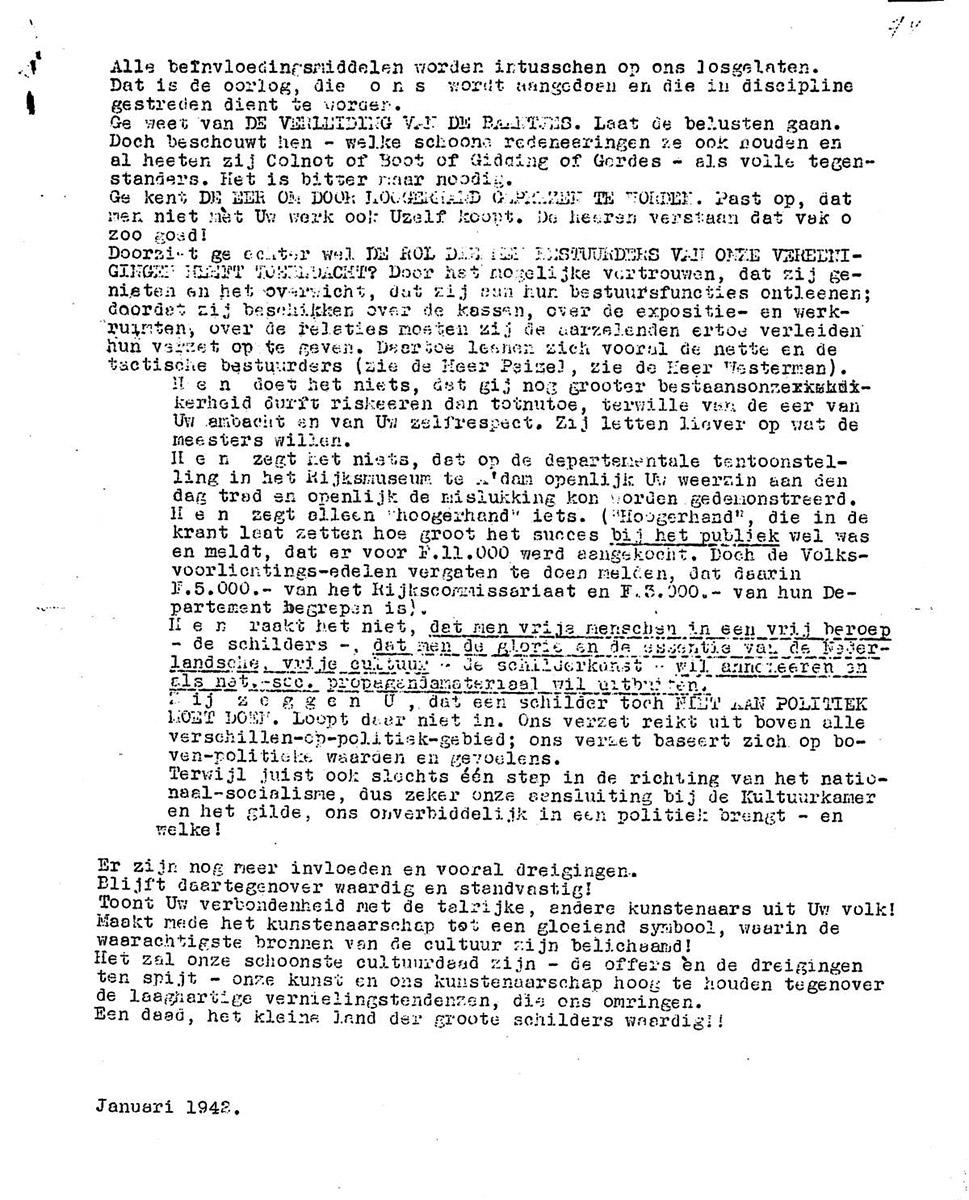
Although Escher was not a member of the ‘Kultuurkamer’, his work did get exhibited or sold from time to time during the war. The fact that this could give rise to some erroneous impressions of his sympathies is something that can be read in this story by former curator Dunja Hak.
Source
[*] and [**] Wim Hazeu, M.C. Escher, Een biografie, Meulenhoff, 1998, page 277
More Escher today

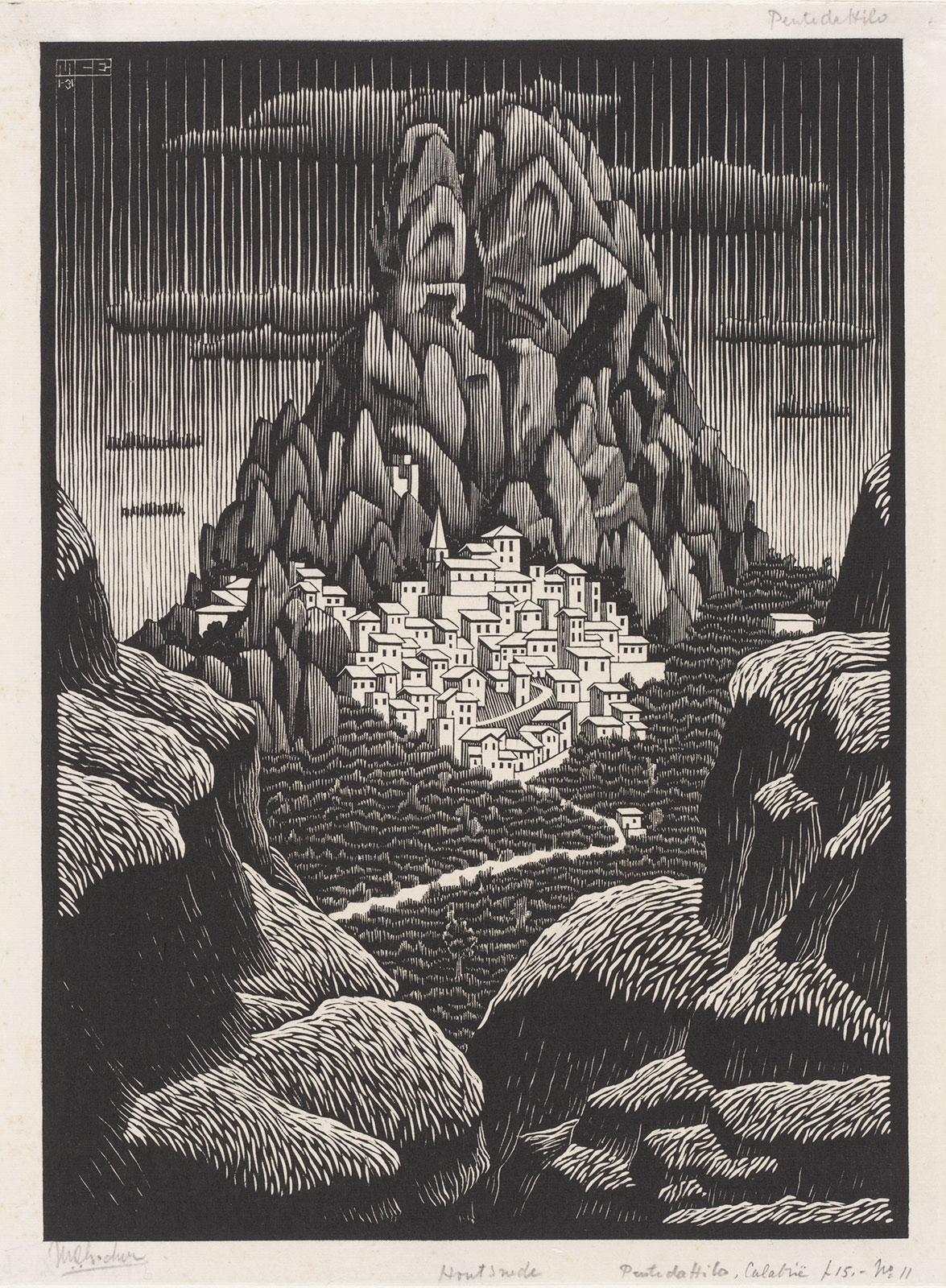
Pentedatillo
